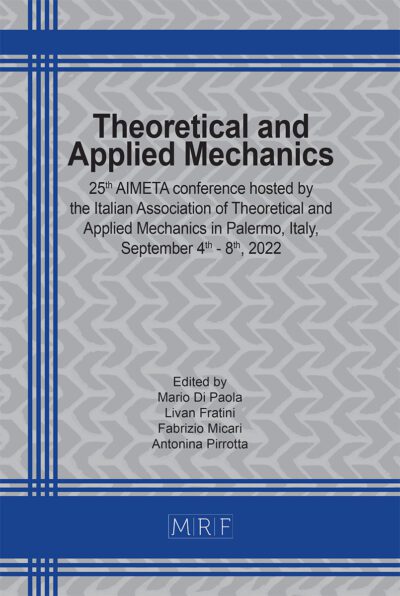Contour extraction for enhanced quality control: Image analysis in mechanical joining
Franziska SCHÜTZELT, Christian KRAUS, Welf-Guntram DROSSEL
Abstract. In mechanical joining, microscopic imaging is an important method for verifying quality requirements, alongside mechanical testing. The current state-of-the-art method involves manual measurement of essential geometric parameters in clinching [1] and self-pierce riveting [2] such as interlock and bottom thickness, which is time-consuming and highly dependent on the operator’s expertise. Furthermore, for validations of numerical simulations, the experimental microscopic image is visually overlaid and aligned with the contour from the numerical simulation manually by the user. These challenges can compromise the efficiency and consistency of quality control. This paper presents a method enabling automated evaluation of microscopic images related to clinching. By extracting and measuring the contour of the mechanical joining joint, in combination with advanced image processing techniques [3] and machine learning algorithms, a more precise and faster process for quality assessment is achieved. The application of machine learning algorithms has already established itself in the field of image processing, particularly in the context of quality assurance [4] and is transferable to the described problem. The use of vectorized contours further enhances the accuracy and efficiency of the analysis. The developed method efficiently analyzes the geometric properties of the joint, comprising important parameters such as neck, bottom thickness and interlock. Automated analysis of microscopic images leads to significant time savings and reduces reliance on individual operator skills. A higher accuracy in measuring geometric parameters can be observed. Allows a detailed analysis of differences between the extracted contours and those from numerical simulations, enhancing the overall evaluation process. The paper provides an overview of the results of previously investigated methods for automatic image processing in the context of mechanical joining, examining methods of varying complexity, from the use of proprietary software for segmenting individual joint components with simple grayscale threshold algorithms to the development of adaptable and modularly extensible open-source segmentation algorithms utilizing current deep learning models.
Keywords
Joining, Clinching, Computer Vision, Metallurgy, Machine Learning
Published online 5/7/2025, 10 pages
Copyright © 2025 by the author(s)
Published under license by Materials Research Forum LLC., Millersville PA, USA
Citation: Franziska SCHÜTZELT, Christian KRAUS, Welf-Guntram DROSSEL, Contour extraction for enhanced quality control: Image analysis in mechanical joining, Materials Research Proceedings, Vol. 54, pp 1384-1393, 2025
DOI: https://doi.org/10.21741/9781644903599-150
The article was published as article 150 of the book Material Forming
![]() Content from this work may be used under the terms of the Creative Commons Attribution 3.0 license. Any further distribution of this work must maintain attribution to the author(s) and the title of the work, journal citation and DOI.
Content from this work may be used under the terms of the Creative Commons Attribution 3.0 license. Any further distribution of this work must maintain attribution to the author(s) and the title of the work, journal citation and DOI.
References
[1] DVS/EFB Gemeinschaftsausschuss „Mechanisches Fügen“, “Merkblatt DVS/EFB 3420 EN Clinching: Basics,” Technical Bulletin DVS 3420, DVS/EFB Gemeinschaftsausschuss „Mechanisches Fügen“, Düsseldorf, 2021.
[2] DVS/EFB Gemeinschaftsausschuss „Mechanisches Fügen“, “Merkblatt DVS/EFB 3410 EN Self-pierce Riveting: Overview,” Technical Bulletin DVS 3410, DVS/EFB Gemeinschaftsausschuss „Mechanisches Fügen“, Düsseldorf, 2019.
[3] R. C. Gonzalez and R. E. Woods, Digital image processing. New York: Pearson, 2018.
[4] J. Diers and C. Pigorsch, “A Survey of Methods for Automated Quality Control Based on Images,” Int J Comput Vis, vol. 131, no. 10, pp. 2553–2581, 2023. https://doi.org/10.1007/s11263-023-01822-w
[5] F. Schützelt, “Entwicklung einer Methode zur automatischen Fügepunktkonturextraktion von Clinch- und Halbhohlstanznietverbindungen,” Diplomarbeit, Fakultät Maschinenwesen, Institut für Fertigungstechnik, Technische Universität Dresden, Dresden, 2021.
[6] J. Canny, “A Computational Approach to Edge Detection,” IEEE Trans. Pattern Anal. Machine Intell., PAMI-8, no. 6, pp. 679–698, 1986. https://doi.org/10.1109/TPAMI.1986.4767851
[7] N. Otsu, “A Threshold Selection Method from Gray-Level Histograms,” IEEE Trans. Syst., Man, Cybern., vol. 9, no. 1, pp. 62–66, 1979. https://doi.org/10.1109/TSMC.1979.4310076
[8] N. Ravi et al., “SAM 2: Segment Anything in Images and Videos,” 2024.
[9] J. Redmon et al., “You Only Look Once: Unified, Real-Time Object Detection,” 2015. https://doi.org/10.1109/CVPR.2016.91














